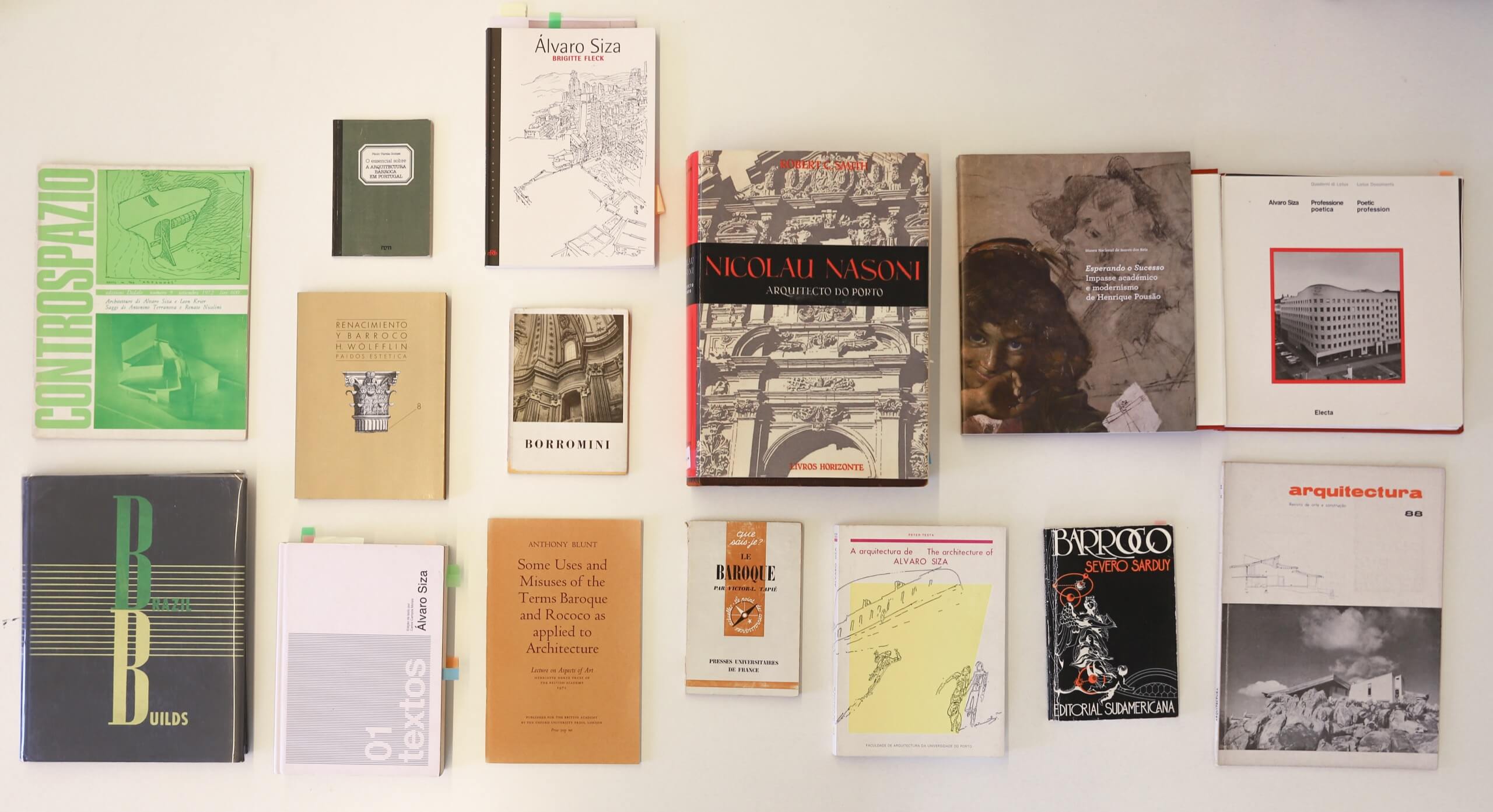The relationship between Álvaro Siza’s architecture and the Baroque has been discussed by various authors writing about Siza and persists in the way that Siza himself, referring to Porto and Nasoni in his own written texts, announces his interest and commitment to knowing more about Baroque architecture and the baroque city.
In this sense, a state of the art that seeks to be critical cannot help but listen to the author in the first person, or, in other words, hear him talking about the Baroque and its problems:
− “The ‘old gold’ or ‘bluish’ granite does not disappear so that the twilight can be filled with other reflections. It is not enough not to demolish the Torre dos Clérigos, not enough not to demolish the city’s Barredo quarter. It’s not necessary to destroy in order to transform.” (Siza, Textos01, p. 20) – Siza is referring to Nasoni’s baroque architecture, which is transfigured into something dull and incorruptible when it encounters the granite of northern Portugal and the city of Porto;
− “My unfinished works – interrupted and altered – have nothing to do with the aesthetics of the unfinished or my belief in the open work. They have to do with the irritating impossibility of finishing, with the impediments that I can’t overcome.” (Idem, p. 29) – Siza is referring here to the problem of praising the unfinished (Agustina), which the Baroque does not always succeed in escaping (Obra do Fidalgo at Marco de Canavezes);
− “This simple order is then constantly dismantled: sculptural staircase, triangular opening onto the patio, the natural asymmetry of the ramp, light, kinks in the wall.” (Idem, p. 41) – Siza is referring here to the dismantling that he saw at the Villa Savoye and to the baroque unfolding of the order, always and, to a certain extent, an order that is both questionable and questioned;
− “I cross the bridge. A dense mist is rising from the river. The city becomes a grey veil, like in a watercolor by António Cruz. The Torre dos Clérigos bursts through, against the almost lit penumbra of the sky, gold dust. And the Grilos. It is the square shape of Nasoni’s beloved palace, white, like a hole in reverse, or perhaps the cube of the Teatro São João (none of that exaggerated ring of apartment buildings, the other side of the Marquês, or those that invade peaceful places).” (idem, p. 203) – Siza is referring here to the whiteness and abstraction of the Palácio do Bispo (Nasoni in the historic centre of Porto) and, particularly, to the “gold dust” – the choice of words is his – which provides the backdrop to the granite Torre dos Clérigos (Nasoni beyond the walls).
Among all those who have written about Siza and the Baroque, mention should be made, in a critical review of the chosen theme, of José Quintão, Peter Testa, and Teresa Fonseca.
− José Quintão broaches the problem in “Una perfetta maniera”, although we believe that this is more to underline the author’s mannerism than his “baroquism”. Despite this, when appreciating the twisted staircase of the Pavilhão Carlos Ramos, Quintão admits the following: “Siza’s staircase increases in width as you move up it, subtly but unequivocally. The perspective effect, rooted in mannerism and assumed by the baroque, is normally one of a vertical diminishing of the ascending path.” (Quintão, 2008, p. 17)
− Peter Testa, from the MIT, published his academic work entitled “The Architecture of Álvaro Siza” – a “thesis” significantly translated by Quintão – in which the theme that he seeks to investigate is proposed and tested by him, with highly fertile results, about the morphological genesis of the Casa Carlos Siza (1976-78): “in works such as Borromini’s projects for the Palazzo Carpegna, we find the masterful development of a form that combines topological relations with the geometricization of axes. While there are no apparent typological relations between the Siza house and the Roman Baroque palaces, other devices employed here may have been derived from these experiences. The constrained patio, which is visually enlarged by perspectival distortion towards the garden beyond, may draw on well-known precedents like the Palazzo Spada in Rome. In fact, we may establish multiple relations with Roman Baroque architecture throughout the house, such as the emphasis on massiveness, tense proportional relations, spatial succession, and cross views.” (Testa, 1988, p. 23) “This is not to suggest that this is a Roman Baroque construction, but rather that the architect Siza found in the Roman Baroque the combination of two systems which he had previously developed independently.” (Idem, p. 21)
− Teresa Fonseca attempts an explanation for Siza’s work based on the ideas of Nasoni: “The Pavilhão Carlos Ramos, at the far north end of the property, backing onto the existing wall, remained, beyond that limit and definitively, a point supporting the geometry of the future constructions that would be built beyond the walls. Its position and form follow Nasoni’s strategy at the Igreja dos Clérigos – the Italian did not exchange the penumbra of the spaces of worship for belvederes, and Siza created intimacy and spaces of meditation under leafy tree tops – he made openings selectively.” (Fonseca in Siza, 2003, p. 44)
Many have written about the significance and importance of Siza’s work, touching on the great questions raised by the Baroque as a valid idea even today, albeit without referring to it directly.
Ana Tostões, Jorge Figueira, and Nuno Grande, for example, did so when writing as the curators of important exhibitions about Siza and Portuguese
Architecture. We believe the dice of this game are thus cast.
It is a matter of following an already announced path – Siza and the Baroque – a natural path for someone who is from the Baroque city that was and is the “Porto of Nasoni.” This is the research path that we propose.

